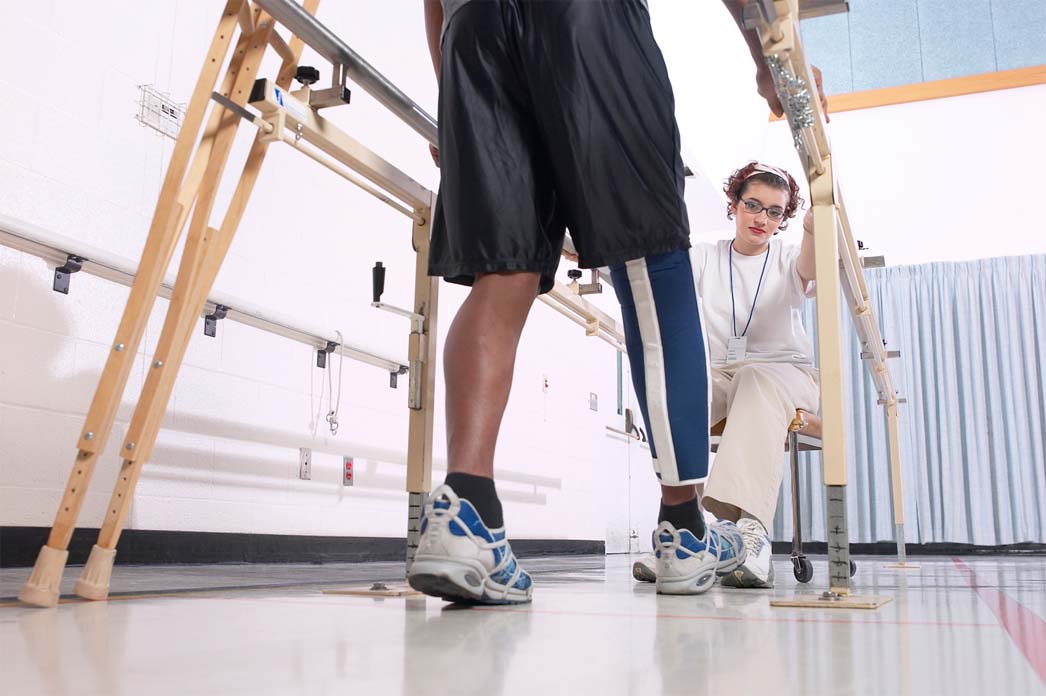Interested in learning more about a MACI rehab program? This sample MACI rehabilitation timeline showcases a few of the milestones you might expect at each interval. Every patient is different, so be sure to consult with your physical therapist on the rehabilitation process that is right for you.

ACHIEVE ROUTINE (0-3 MONTHS)
The road to recovery starts right away. Once you recover from anesthesia after surgery, you will likely be released from the outpatient facility or hospital that same day. At the facility, you will practice walking with crutches and may have a knee brace or splint to immobilize the knee and help protect the MACI implant.
Upon returning home, you should find a comfortable setting and limit any unnecessary movements. Most of your care will focus on reducing swelling and mitigating any residual pain. A good time to binge watch TV or catch up on that podcast you are behind on!
And while rest is critical, you shouldn’t expect to be in bed for three months! Patients get back to seated office work as early as two weeks. When ready, you will begin performing limited home exercises as directed by your surgeon and physical therapist, building strength that gets you closer to your daily routine.
Functional Goals:
- Movement with crutches within the first week
- Limited weight bearing and pain free, full knee extension by 2-3 weeks
- Intendent home exercise as early as 1 month
- Full weight bearing and full knee range of motion by 8-12 weeks post-surgery
- Free from knee brace by 8-12 weeks post-surgery

BUILD STRENGTH (3-6 MONTHS)
During the second rehab phase, 3 – 6 months after surgery, durable repair tissue continues to mature, regenerating your damaged knee cartilage. What does that mean for your daily life? By now, you should be able to drive and even try some light stationary cycling. Ultimately, your activity goal in this new phase is to move pain-free throughout the day and start to build up your strength. Those in physically active jobs such as nursing or construction frequently go back to work in this phase, and exercise enthusiasts gradually increase the distance, time, and difficulty of exercises. Everyone heals at a different pace so ask your physical therapist or doctor before making any big adjustments, but here are some common milestones for phase two:
Functional Goals:
- Full and pain-free weight bearing and range of motion
- Continue progression of strengthening exercises without pain or swelling
- Transition to gym/home-based rehab

BE ACTIVE (6-9 MONTHS)
When you hit 6-9 months, the world of possible activities opens even further. Your repair tissue continues to mature and progress during your physical therapy program, and by this phase you should begin to experience restored knee function. Those in heavy labor fields such as the military or firefighting can return to work after the doctor has cleared you. RSVP to invites for the activities you used to love pre-injury — distance runs, tennis, skiing, and weightlifting classes, always checking in with your physical therapist along the way to ensure you have the green light.
Functional Goals:
- Increase distance, time, and difficulty of exercises
- Ability to tolerate lengthy walking distances
- Return to a pre-operative level of activity

POST REHAB (9+ MONTHS)
Congratulations! The hardest part of the journey is behind you, and now you’re in the post-rehab phase. You will be working toward making full demands on your knee as the repair tissue continues to mature. Recovery from MACI treatment is highly individualized, so each rehabilitation program will look slightly different and depend on the goals you have for physical activity.
Functional Goals:
- Full return to recreational activities
- Expanding your agility with increased strength training
Recovering with My MACI App
Everyone heals at their own rate and cartilage will continue to mature over time, which is why your MACI rehabilitation timeline and recovery program is tailored specifically to your individual goals and objectives. To make the most of your rehab experience, download the My MACI app to track exercises, recognize your rehab progress, and discuss your recovery with your physical therapist.
The My MACI app is available to download for free from iOS and Google Play Store.
Please see below for full indication and ISI. Blog posts are intended to provide educational information. Always talk to your doctor with any questions.

